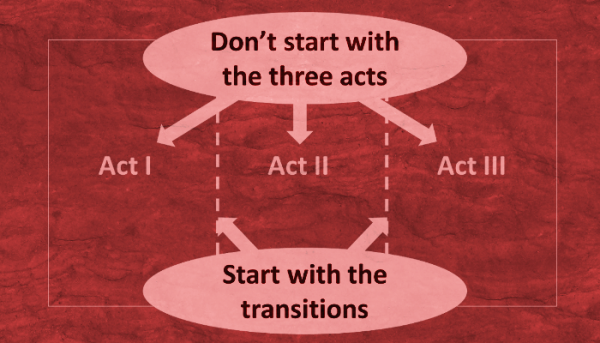
Over the past couple of years, I’ve noticed how many new business storytellers experience writer’s block while trying to use the three-act story structure. Their problem isn’t with the structure, per se, but rather their struggle to figure out what goes into each act. The good news is that I have a technique for getting over this issue.
First, let’s define each act:
- Act I establishes the steady-state situation before a change is introduced.
- Act II contains the situational ripples that result from the change.
- Act III contains the new steady-state after the change is addressed.
The key to unlocking three-act writer’s block is found in the common word within each definition. Since all three acts involve change, I recommend focusing on it as opposed to the acts themselves by asking two questions:
- What changed to transform a stable situation into an unstable one?
- What did the people do to establish a new stable situation?
The answer to question #1 describes the transition from Act I to Act II. The answer to question #2 describes the transition from Act II to Act III. By asking questions about the transitions instead of the acts themselves, it’s easier to generate a content list for the things that must go into each act.
For example:
Question #1: What changed to transform a stable situation into an unstable one?
ACME manufactures widgets by hand. Until recently, the company has always been able to keep up with demand. However, when a celebrity tweeted some love about ACME’s flagship product, orders spiked, outstripping ACME’s manufacturing capacity, increasing backlog, delaying shipments, and as a result, impatient customers began canceling their orders.
Question #2: What did people do to establish a new stable situation?
ACME sought, found, and installed a widget machine that increased its manufacturing capacity.
By defining the transitions between the acts, we can now fill in the details around them.
- Act 1: contains why ACME Widget needed a better way to manufacture widgets
- Act 2: contains the process that the company used to find this better way.
- Act 3: contains how the machine has changed the way ACME does business.
The next time you are trying to write a business story by using the three-act structure, focus on the transitions and the acts will take care of themselves.